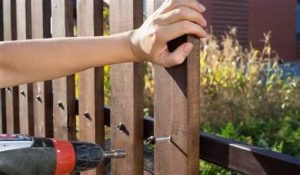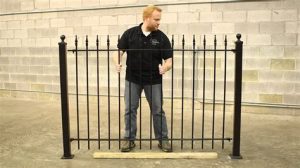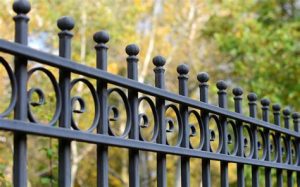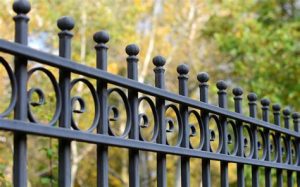Explore the benefits of DIY fence installation, material selection, installation steps, curb appeal enhancement, and property resale value impact for homeowners.When it comes to enhancing your home’s value, one often overlooked but impactful improvement is the installation of a fence. Not only does a well-chosen and skillfully installed fence provide function and privacy, but it also significantly elevates your property’s aesthetic appeal and marketability. This blog post delves into the advantages of taking on a DIY fence project, from understanding the benefits to selecting the right materials. We’ll provide you with a step-by-step installation guide and discuss how a professionally executed fence can enhance both curb appeal and resale value. Whether you’re a seasoned DIYer or a novice looking for guidance, this comprehensive overview will equip you with the knowledge to make an informed decision and potentially boost your property investment. Let’s explore how a fence can make a difference!
Understanding the benefits of DIY fence installation
Installing your own fence can be a rewarding and cost-effective project. One of the most significant benefits of a DIY fence installation is the substantial savings on labor costs. By taking on the project yourself, you can allocate the funds saved towards higher-quality materials or additional landscaping.
Another major advantage is the ability to customize the fence to your specific needs and preferences. With a DIY installation, you have full control over the design, height, and type of material used, allowing you to create a space that perfectly matches your aesthetic vision. This tailored approach can significantly enhance your property’s value and appeal.
Finally, undertaking a DIY fence project provides a sense of accomplishment and gives you a chance to learn valuable skills. As you navigate the installation process, you’ll deepen your understanding of fence construction and maintenance, making you more self-sufficient as a homeowner.
Choosing the right materials for your fence
When it comes to building a fence, choosing the right materials is crucial. The materials you select can significantly affect the durability, aesthetic appeal, and maintenance requirements of your fence.
- Wood: A traditional choice, wood fences offer a classic look and can be customized easily. However, they require regular maintenance and can be susceptible to rot and pests.
- Vinyl: Known for its low maintenance, vinyl fencing is durable and resistant to fading. It comes in a variety of styles but may not have the same natural charm as wood.
- Chain Link: If you’re looking for affordability and practicality, chain link fences are a great option. They provide security without obstructing visibility, although they may not add much to the aesthetic value of your property.
- Aluminum: Lightweight and rust-resistant, aluminum fencing provides a sleek and modern look. It’s durable and typically requires little maintenance, although it can be more expensive than other options.
- Composite: Made from recycled wood fibers and plastic, composite fencing is eco-friendly and mimics the look of wood without the upkeep, making it an attractive choice for many homeowners.
In addition to the aesthetic considerations, you should also evaluate the local weather conditions, your budget, and local building regulations. Choosing the right material not only enhances the curb appeal of your home but also contributes to its overall property value.
Always consider the long-term implications of your material choice. Investing in higher-quality materials can save you money on repairs and replacements down the line. Furthermore, consult with local suppliers or professionals to understand which materials are best suited for your specific needs and circumstances.
Ultimately, making an informed decision about your fencing materials can set the foundation for a successful fence installation that enhances both functionality and the visual appeal of your property.
Step-by-step guide to installing a fence
Installing a fence can seem daunting, but with the right guidance, it can be a rewarding DIY project. Follow this step-by-step guide to ensure a successful installation that enhances the aesthetics and functionality of your property.
1.
Before you start digging, take the time to plan your fence layout. Consider local zoning laws, property lines, and any community guidelines. Sketch out your design, including the type of fence you want and the location.
2.
Once your plan is set, collect all necessary materials and tools. This typically includes fence panels, posts, concrete (for setting the posts), screws, and any required tools such as a post hole digger, level, and drill. Don’t forget to wear proper safety gear!
3.
Using your design, measure and mark where each post will go. Ensure that you keep a consistent distance between the posts. Using stakes and string can help create a straight line that guides your post placement.
4.
Using a post hole digger, dig holes deep enough to secure the posts. A good rule of thumb is to make the hole one-third as deep as the height of the post. For example, for a 6-foot fence, aim for at least a 2-foot deep hole.
5.
Place the posts in the holes and ensure they are level and straight. Use concrete to secure them, allowing it to set as per the manufacturer’s instructions. This step is crucial for the durability and stability of your fence.
6.
Once the posts are set, it’s time to attach the fence panels. Depending on your design, this can involve screwing the panels into the posts or using brackets. Ensure everything is aligned and sturdy.
7.
After the panels are attached, check for any adjustments. Fill in any holes around the posts with soil and give your fence a final inspection. If desired, paint or stain the fence for extra protection and enhanced appearance.
8.
To ensure the longevity of your fence, plan for regular maintenance. This may include cleaning, staining, or painting to protect against the elements and prolong its life.
Building your fence from scratch can significantly increase property value while giving you a sense of accomplishment. By following these step-by-step instructions, you can enjoy both the aesthetic and financial benefits of a well-constructed fence.
How a well-installed fence enhances curb appeal
A well-constructed and aesthetically pleasing fence can serve as a striking feature of your property, significantly boosting its curb appeal. When homeowners consider the outer appearance of their property, a fence is often one of the first elements they focus on. An appealing fence not only defines your property line but also creates a sense of style and elegance.
| Benefit | Description |
|---|---|
| Defines Boundaries | A well-installed fence clearly delineates your property, adding a sense of structure and organization. |
| Increases Privacy | By restricting sightlines from the outside, a privacy fence adds an element of seclusion that enhances comfort. |
| Improves Security | A sturdy fence can deter intruders, raising the level of safety for your home and family. |
| Adds Aesthetic Appeal | Choosing the right materials and design can make your fence a beautiful architectural feature of your landscape. |
Furthermore, a new fence can create a cohesive look with your home’s exterior, harmonizing the architecture and landscaping. Opting for materials that complement your home’s construction can create a seamless transition between indoor and outdoor spaces.
In summary, a well-installed fence not only enhances your property’s curb appeal but also offers numerous practical benefits. By investing in a quality fence, homeowners can significantly improve their property’s visual impression and overall marketability.
The impact of a fence on property resale value
When it comes to enhancing the allure of a property, a well-constructed fence is not just a boundary, but a statement. Investing in a fence can significantly impact your home’s resale value. A fence adds not only privacy and security but also aesthetic appeal, which can be crucial factors for potential buyers.
According to various studies and real estate professionals, properties that feature a well-maintained and attractive fence can see an increase in value by as much as $1,500 to $5,000. Factors contributing to this range depend on the material used, design, and landscape integration. A quality fence can make your home more appealing and desirable compared to neighboring properties.
In addition to its aesthetic benefits, a well-installed fence can provide essential safety for children and pets. Buyers often consider these factors when assessing a home’s value.
Frequently Asked Questions
How does installing a fence enhance property value?
A well-maintained fence can improve curb appeal, provide privacy, and enhance security, all of which can make a property more attractive to potential buyers.
What types of fences are best for increasing property value?
Wood, vinyl, and wrought iron fences are popular choices that often offer a good balance of aesthetics, durability, and maintenance requirements.
Do local regulations affect fence installation?
Yes, local zoning laws and homeowners association guidelines can dictate the type, height, and placement of fences, so it’s essential to check these regulations before installation.
Can a fence impact the sale speed of a property?
Yes, properties with attractive, high-quality fencing often sell faster than those without, as buyers appreciate the added privacy and security.
Is it important to match the fence style with the house?
Absolutely. Matching the fence style with the architectural features of the home can create a cohesive look that enhances the overall value of the property.
How can I maintain a fence to ensure it adds value?
Regular maintenance such as cleaning, painting, and repairing any damage can keep your fence looking good and prevent it from detracting from your property’s value.
Are there any landscaping considerations when installing a fence?
Yes, proper landscaping can complement your fence; integrating plants and flowers can enhance visual appeal and further increase property value.





